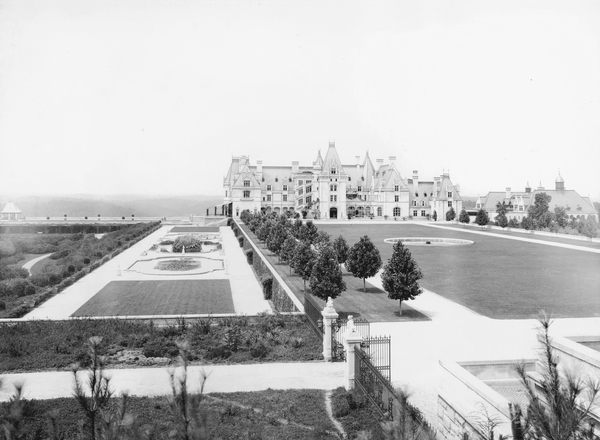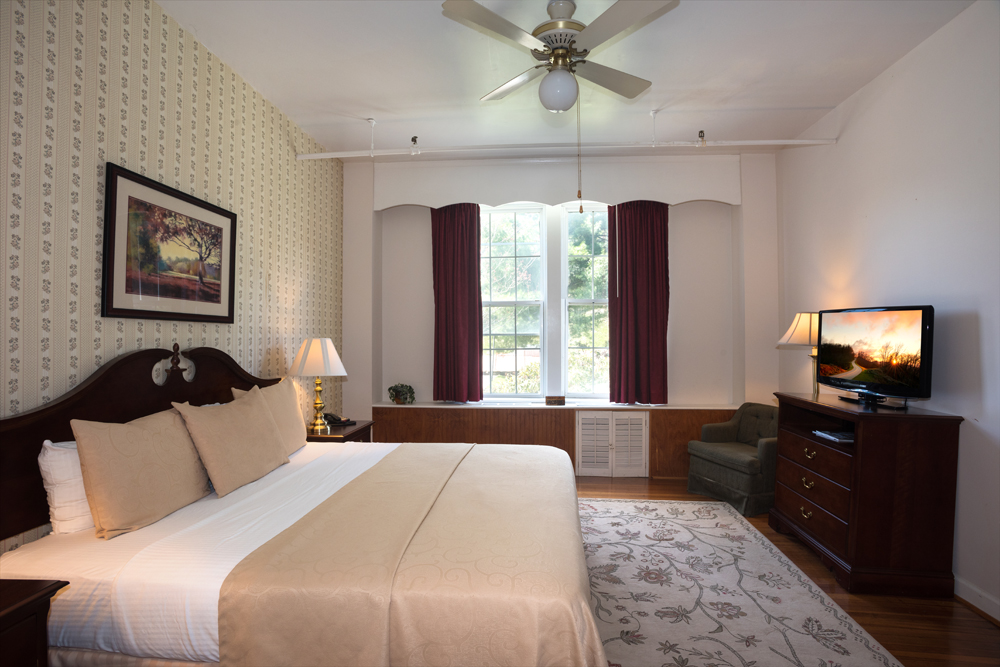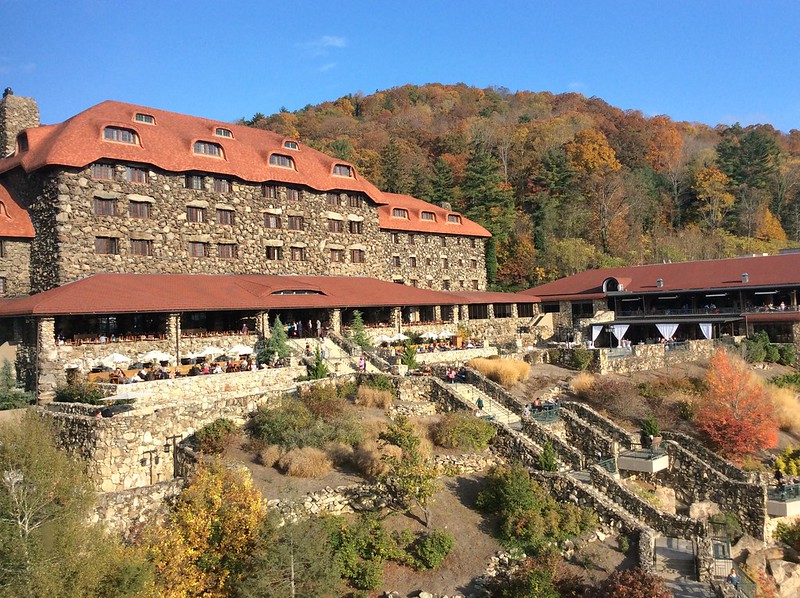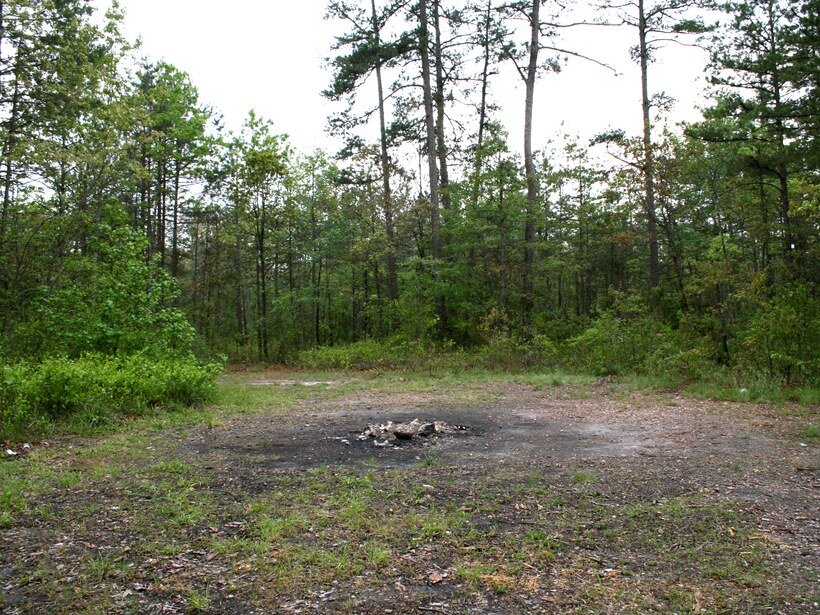On July 20, 1922, 20-year-old Laurens West and 24-year-old Emory Lance were shot dead by Walter Brooks, a guard of the Biltmore Forest Development Company.
The tragedy occurred at approximately 11pm when five boys—Laurens West, Emory Lance, Price Sumner, Fletcher Frady and Carl Murray—drove up to a spot several hundred yards south of the Shiloh gate leading to the Biltmore Estate. Guards Walter Brooks and Jim Taylor were sent to investigate the suspicious car. Upon arriving at the scene, they were threatened by the five boys, with one saying “Brooks, you killed my dog and I came down here to get even with you. We are going to take this place!”
Lance was reportedly holding a piece of iron while the other boys were holding objects, ready to hurl towards Brooks and Taylor.
Threatened, Brooks opened fired at the group, killing West and Lance on the spot. The remaining three boys managed to escape the scene though Price was seriously wounded during the shooting. Walter Brooks was later charged with second degree murder.
History of Biltmore Estate
Commissioned by George Washington Vanderbilt II—grandson of Cornelius Vanderbilt—in 1889, the Biltmore House took over a thousand man and six years to complete. Cornelius was an American business magnet who made his fortunes in the railroad and shipping business. He was famously known for his contributions to the country’s transportation infrastructure and has helped shaped the geography and growth of the United States. At the time of his death, Cornelius was estimated to be worth $105 million, today’s equivalent of $3.15 billion.
To expedite the transportation of laborers and building materials, a three-mile railroad track was temporarily constructed, directing carriages from the main railway directly to the construction site; the track was demolished once the estate was completed.
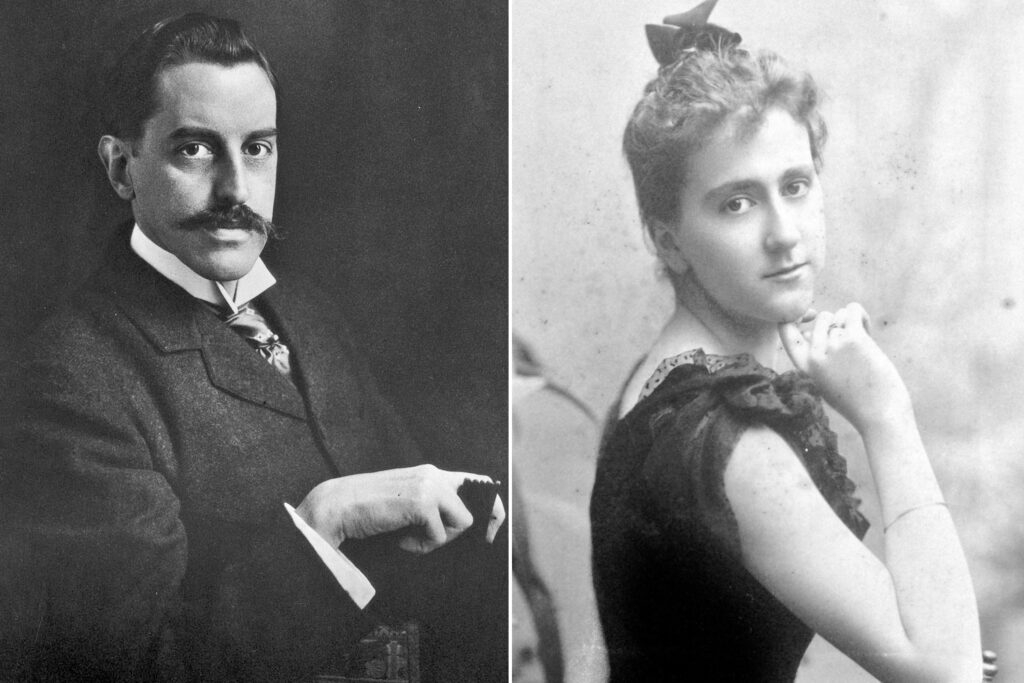
Completed in 1895 at a cost of $5 million (today’s equivalent of $150 million), the Gilded Age mansion spans over four acres (174,240 sq ft) and is home to over 250 rooms and a host of amenities including a winter garden, a two-storey library beloved by George, an indoor swimming pool, and the first ever bowling alley in a residential home. Till today, the Biltmore House continues to hold the record as the largest house in America.
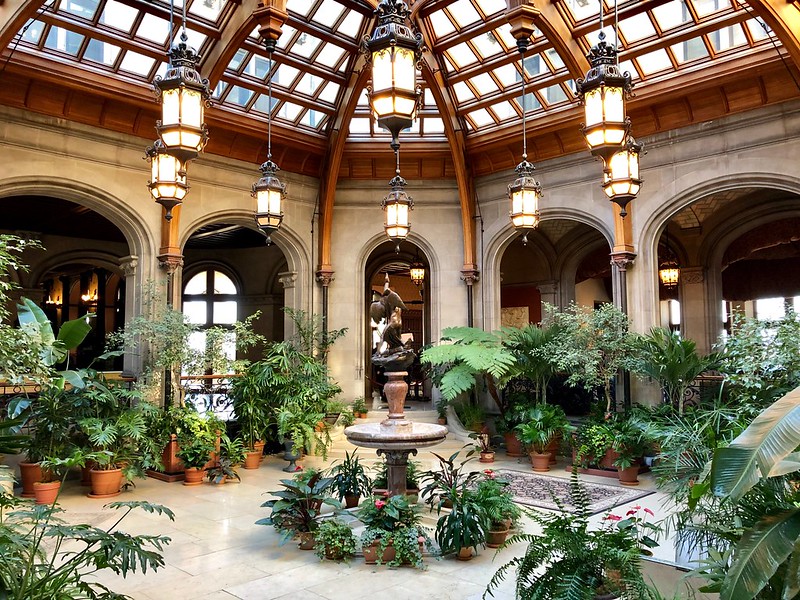
Surrounding the house is 125,000 acres of land bought over from local land owners, farmers and even cemeteries, Collectively, they make up the Biltmore Estate. However, the expensive maintenance and introduction of new income tax laws in the have forced the early 20th century have forced the Vanderbilt family to sell off a majority of the land. What remains today are the Biltmore House and 8,000 acres of land split in half by the French Broad Water.
Are There Secret Passages in the Biltmore House?
Accompanying 250 rooms, 43 bathrooms, 65 fireplaces and 3 kitchens in the Biltmore House are dozens of hidden passageways and secret rooms. The concealed spaces were designed for the servants to move in and out of the common spaces and to give the Vanderbilt family and guests the much needed privacy.
Located at the Breakfast Room is a concealed door that leads to the butler’s pantry, allowing servants to serve meals to the guests with ease. The door frame can be sieved out on the sides of Renoir’s Child with an Orange painting; the doorknob sticks out on the bottom right side of the painting.
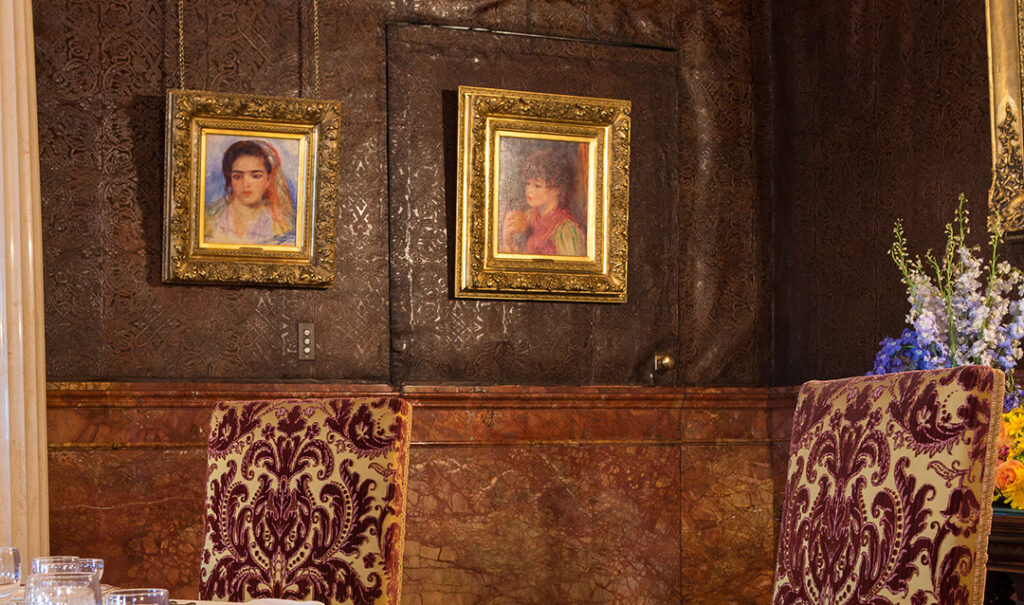
The massive, two-storey library is also home to several hidden spaces, including a hidden library, a concealed room named the “Den”, and a passageway that leads to the guests bedroom. The door to the “Den” is concealed by a carving of the St. Peter the Martyr.
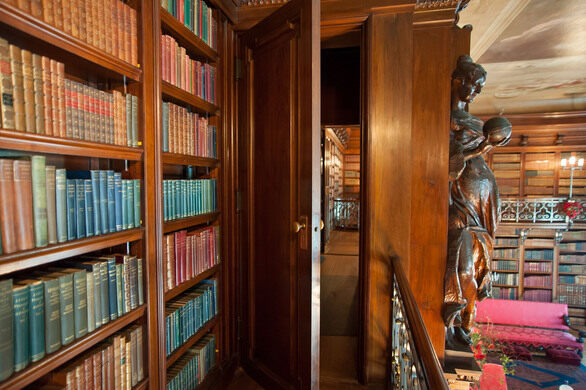
At the Vanderbilt’s Billiard Room is a hidden wooden door that leads to the Smoking Room. The Billiard Room served as a recreational room for billiards and tabletop games for both men and women. The Smoking Room however, was used exclusively by the gentlemen and is where Vanderbilt would serve his collection of cigars and brandy to his guests.
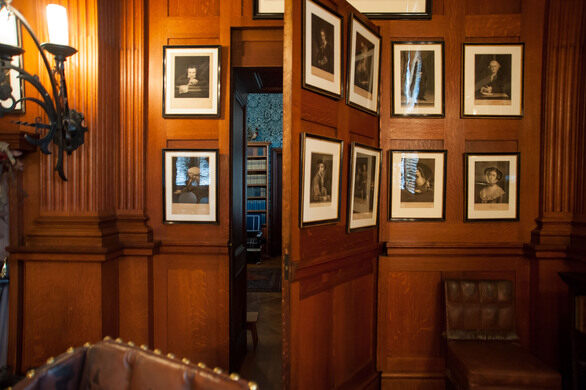
Last but not least, a concealed closet door can be found in George Vanderbilt’s bedroom. The closet which was used to store his collection of hats and accessories, was deliberately hidden from view to preserve the symmetry of space that would otherwise be broken by the presence of a doorframe.
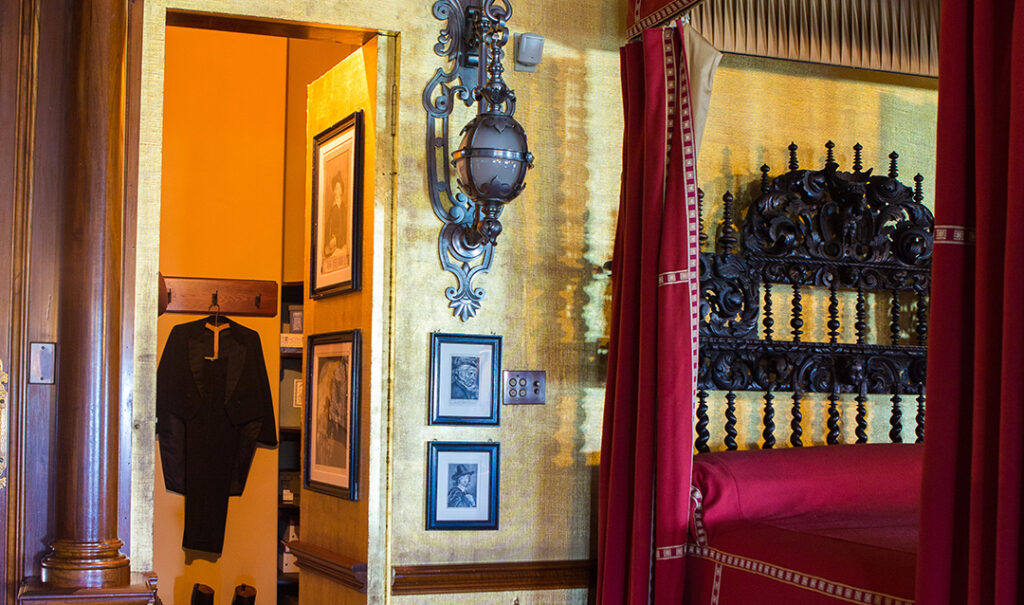
The Biltmore Estate Pool
The Biltmore Estate is well known for its 70,000 gallon large indoor swimming pool. For comparison, the Olympic swimming pools we see today holds about 660,000 gallons of water. To top it all off, the pool featured a heating system and is lit with underwater lights that are powered by both alternating current (AC) and direct current (DC). The lights were sealed in a glass globe and fixed at the sides of the pool. This was built at a time when most homes in the United States were still lit with candles, oil and gas lamps, making the Biltmore Estate an architectural masterpiece even by today’s standard.
However, no filtration or cleaning system was installed. As such, water in the pool was drained and refilled every couple of days via a pipe linked to a nearby mountain reservoir.
Ropes on the sides of the pools were said to be meant for non-swimmers as well as for emergencies, given that lifebuoys were not a common thing back in the days.
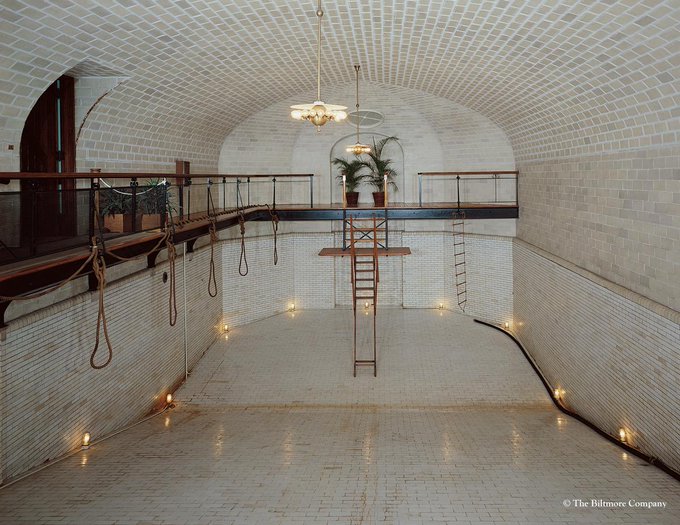
It was rumoured that a child, reportedly to be a family friend of the Vanderbilt family, drowned in the pool during one of the lavish parties held in the estate. However, the legend was denied by the management of the Biltmore Estate, neither where there any official records to back the rumor.
Ghosts of Biltmore Estate
Today, the Biltmore Estate is said to be haunted by George Vanderbilt who died in the house in 1914. After George’s death, his wife Edith Stuyvesant Dresser was said to have spent hours in the library ‘talking’ to the spirit of her deceased husband. Servants maintaining the library have also felt a sense of uneasiness, with some claiming to have seen the spirit of George sitting in a chair at the corner of the room and reading a book.
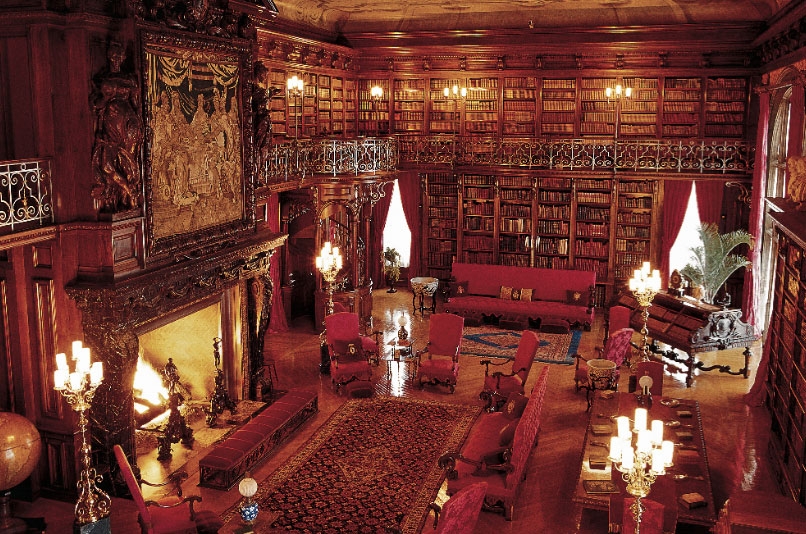
Another active spot in the Biltmore Estate is the indoor swimming pool. Visitors visiting the now-empty pool have reported hearing splashing sounds and even a wicked laughter.
Many visitors have also reported paranormal experiences when walking up the four-storey high Biltmore’s Grand Staircase. Staircases are widely known by the paranormal community to be energy vortexes (or spiritual vortexes) where an area of concentrated energy can be found, serving as a portal for spirits to manifest.
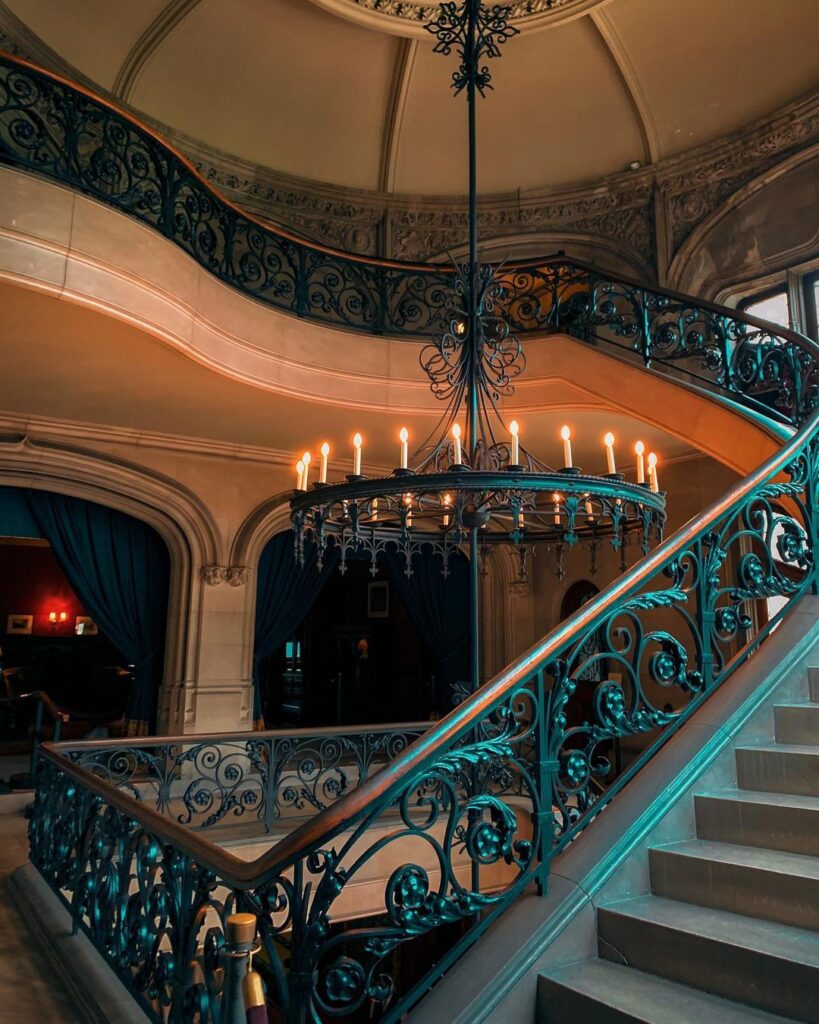
Visitors touring the rooms of Biltmore House have also felt that they were being constantly watched or followed. It may have been the spirits of a servant who have lingered in the estate and continued its duties to serve guests and family members of the Vanderbilts family.
Last but not least, there is the tale of a headless orange cat wandering the house from time to time. There was no records of the family keeping a house pet, neither where there any accounts of how the cat lost its head.
Who Lives on the Biltmore Estate Today?
The Biltmore Estate is no longer lived by the Vanderbilt family since its opening to the public as an attraction. However, it is still owned by the family and is currently run by the Biltmore Company, a trust owned by the family of William Amherst Vanderbilt Cecil, the grandson of George Washington Vanderbilt II.
Apart from owning the Biltmore Estate, Biltmore Company owns a handful of businesses in Asheville ranging from hotels and restaurants to wineries and retail shops. With over 2,400 employees, it is one of the largest employers in the city.
Visiting the Biltmore Estate
In 1930, Biltmore Estate opened its doors to the public for viewing. Back then, admission ticket cost $2 for adults and $1 for children. In 1963, Biltmore Estate joins the rank of over 2,500 historic properties across the country—including Oak Alley Plantation, Pittock Mansion and Bacon’s Castle—to become a listee of National Historic Landmark; the prestigious recognition is given to sites, structures, or districts that ““that illustrate the heritage of the United States.”
Today, tickets to the Biltmore Estate starts from $66 depending on the season. Admission includes a self-guided visit to the house and its gardens, entry to the “The Vanderbilts at Home and Abroad”, and a free wine tasting and guided winery tour. Find out more about visiting the Biltmore Estate here.

